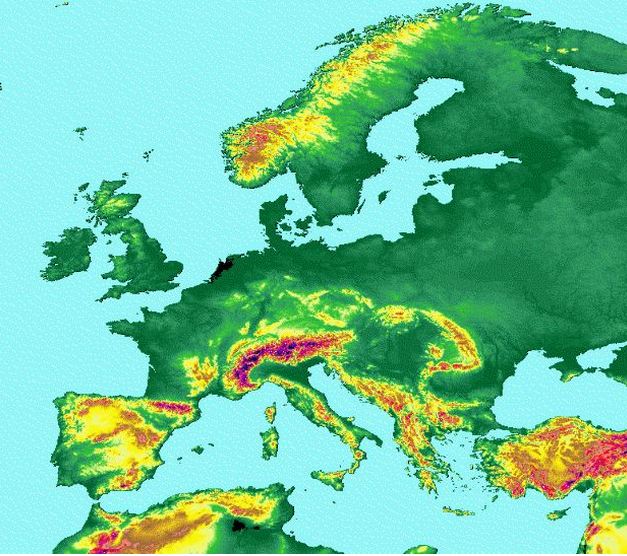A great
picture of Europe , which nicely summarizes
some of the things I have been recently saying. It shows the Alps, the natural
fence that protects Italy
from the rest of Europe . Above the Alps you can
see the fertile corridor, the low lands, which connect France and the end of the European part of Russia at the Ural
Mountains . After the Uran
Mountains the Asian part of Russia begins i.e. Siberia .
Picture 1
Picture 2
Until 1871,
when Germany was created, France and Russia
were the two great powers, sitting at the two ends of this fertile and easily
accessible corridor, which bypasses the Alps and the Carpathian
Mountains .
Picture 3
Picture 4
Before Germany was created in 1871, France and Russia Russia Germany
In the First World War, in 1914, the French
and the Russians united against the Germans. In the Second World War, in 1939,
the Germans rushed to unite with the Russians against the French. Only when
Hitler broke the Nazi-Communist alliance in 1941, the Russians united again
with the French. After the Second World War, the European Union was created,
with the hope that France
and Germany France
even agreed to the unification of Germany
Picture 5
The common
currency, actually the printing of more of the common currency, would act as an
automatic transfer of resources from Germany
to France
There is
therefore a constant bargaining between Germany
and France , and there is a
fear that at some point France will insist on receiving from Germany Germany has a plan B in order to confront France , and that plan B is Russia , with whom Germany France ’s
plan B was to join NATO in 2009, 43 years after the French national socialist
leader De Gaul withdrew France France
is hoping to face Germany
and Russia in Europe, and also
face China in Africa . Given France ’s
tradition in national socialism and communism, and given France
Now we have
to wait and see how things turn out in this historic corridor that starts in France and ends in Russia ,
passing through Germany
A great
book about the clash between France
and Germany
Picture 6
Picture 7







Δεν υπάρχουν σχόλια:
Δημοσίευση σχολίου